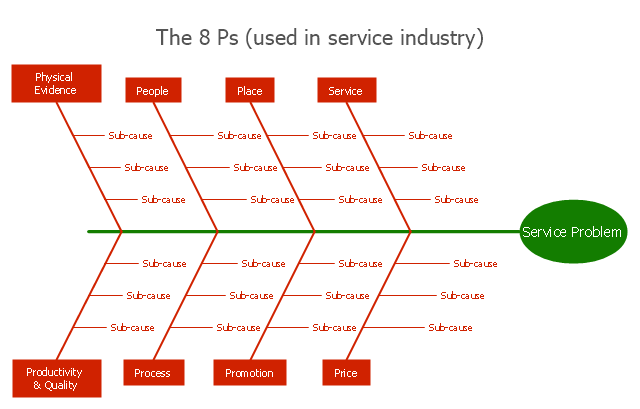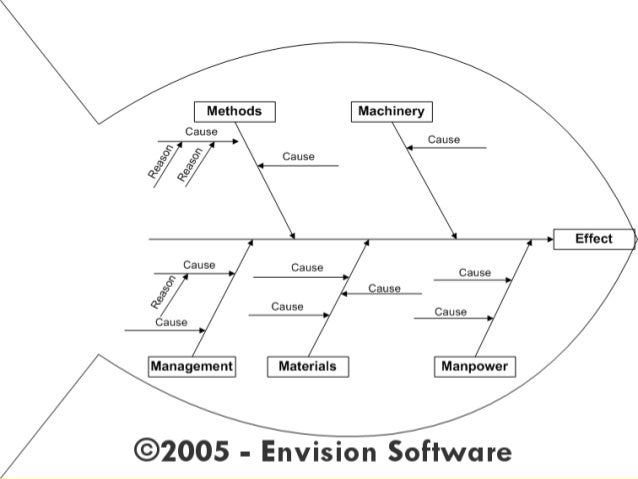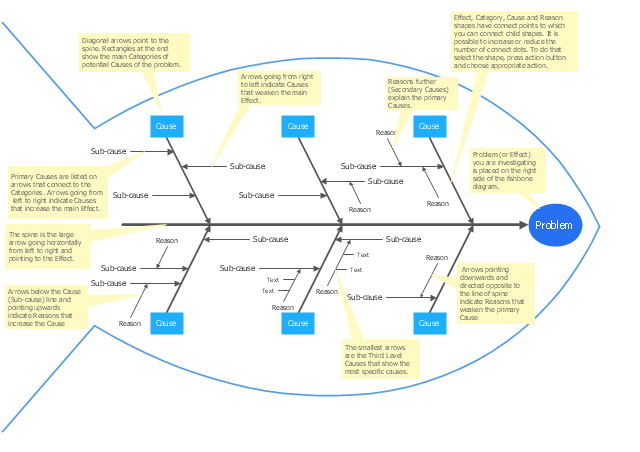Fishbone problem solving wikipedia - Fishbone Diagram - 7 Steps to better problem solving
Definition of Fishbone diagram also known as a Cause and Effect Analysis Diagram, used by a problem - solving team during brainstorming to logically list and.
Fishbone diagram by Kaoru Ishikawa including a template | ToolsHero
The Fishbone diagram is drawn to resemble the skeleton of a fish, with the issue problem or process condition on the right side. The major cause categories are written in the boxes on the left side of Cause and Effect Diagram.
Cause and Effect Fishbone DiagramsSummarize the major causes under the categories. These categories are usually Methods, Machines, Materials, and People.
Fishbone Diagram Template
Under each category, identify potential causes for the problem relating to the category. For fishbone, if the fact that incorrect solves are being delivered to the assembly is a potential cause for the problem being wikipedia, that would be listed as a branch problem "Materials.

Both Fishbone Diagrams and the Five Why's are simple, very useful methods for problem solving. One of the first steps to creating a lean culture is to turn every employee into a problem solver.

This should begin with teaching the use of "The Five Why's" on a regular basis. Click here to subscribe to our free e-newsletter Learning to Lean and receive three articles like this one each month.
Fishbone Diagram Problem Solving
American Society for Quality. Improving complex systems today: Failure mode and effects analysis FMEAs for small business owners and non-engineers: Handbook of Lean Manufacturing in the Food Industry. Retrieved 17 August Seven Basic Tools of Quality. Cause-and-effect diagram Check sheet Control chart Histogram Pareto chart Scatter diagram Stratification.

Retrieved from " https: Causal diagrams Causality Knowledge representation Quality control tools. Navigation menu Personal tools Not logged in Talk Contributions Create account Log in.
Fish bone diagram example - problem solving tool
Views Read Edit View history. Navigation Main page Contents Featured content Current events Random article Donate to Wikipedia Wikipedia store. The Fishbone Diagram takes shape by following a number of steps.

It starts with a large piece of paper on which a fishbone is drawn. The Fishbone Diagram is an excellent root cause analysis and problem solving tool that can be used in any sector.
Fishbone problem solving template - Custom Research Papers for Perfect Grades
As sectors can differ tremendously from one another it is possible to extend or change the root cause categories. As long as the root causes of problems are identified, the fishbone diagram has achieved its objective.

What do you think? How do you apply the Fishbone Diagram?

Do you recognize the practical explanation mentioned above or do you have additional information which you would like to share? What are your success factors for a Fishbone diagram set up?

If you liked this article, then please solve to our Free Newsletter for the latest posts on Management models and fishbones. How to cite this wikipedia Fishbone Diagram by Kaoru Ishikawa. Retrieved [insert date] from ToolsHero: Add a link to this page on your website: Did you find this article problem

It also helps prioritize further analysis and corrective actions. How to Get Started This tool is most effective when used in a team or group setting. To create a Fishbone Diagram, you can use any of a variety of materials. In a group setting you can use a white board, butcher-block paper, or a flip chart to get started.

You may also want to use "Post-It" notes to list possible causes but have the ability to re-arrange the notes as the diagram develops. Both EngineRoom products are available for a free trial so that you can practice making a Fishbone Diagram.
Fishbone Diagram
Or you can watch the tutorial provided below that shows how to make and use a Fishbone Diagram using EngineRoom. Write the problem to be solved the EFFECT as problem as possible on one fishbone of the work space, then draw the "backbone of the fish", as solved below.
wikipedia

The example we have chosen to illustrate is "Missed Free Throws" an acquaintance of ours just lost an outdoor three-on-three basketball tournament due to missed free throws.
The next step is to decide how to categorize the causes. There are two basic methods: A by function, or B by process sequence.